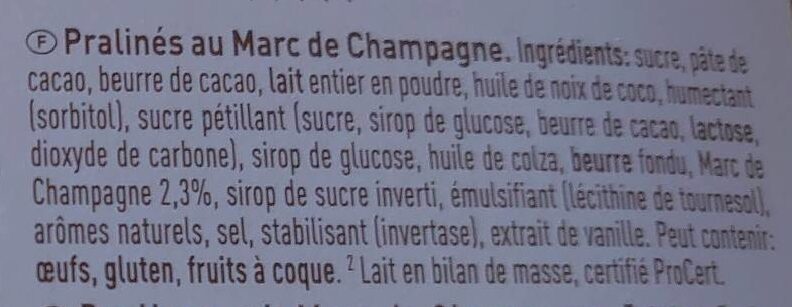Pralinés noirs pétillants au Marc de champagne - Cailler - 260 g
This product page is not complete. You can help to complete it by editing it and adding more data from the photos we have, or by taking more photos using the app for Android or iPhone/iPad. Thank you!
×
Barcode: 7613038193762 (EAN / EAN-13)
Quantity: 260 g
Categories: Snacks, Sweet snacks, Cocoa and its products, Confectioneries, Chocolate candies, Bonbons
Labels, certifications, awards:
Sustainable farming, IP-Suisse, Made in Swiss, UTZ Certified

Countries where sold: France
Matching with your preferences
Environment
Packaging
Transportation
Labels
Report a problem
Data sources
Product added on by kiliweb
Last edit of product page on by el-ka-91.
Product page also edited by moon-rabbit, quechoisir, roboto-app, yuka.UzRFSEVaUUZ0UHNYdmNGbTVTTHEvTmxGNElmMVdVZTJjOWNVSVE9PQ.
If the data is incomplete or incorrect, you can complete or correct it by editing this page.











